Performing a marker analysis
After opening a raw file for a marker analysis, ANSLAB offers 3 types of marker analysis to choose from (binary, digital, and fixed):
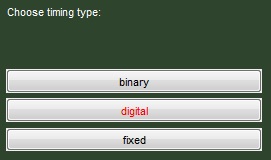
- Binary
This analysis type is used to create timing files based one or more binary channels. - Digital
Use this analysis mode if a single marker channel, consisting of distinct integer values only, should be analyzed. - Fixed
Allows to create simple timing files with either a fixed number of segments or a fixed segment length (the other parameter is determined based on the recording length).
Binary timing
If you have only one dedicated binary marker channel, ANSLAB can load it automatically and extract timing information without further input.
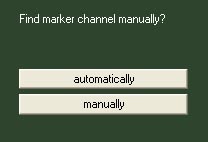
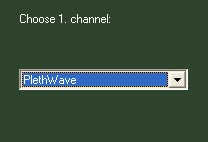
Next, if more than one channel has been chosen, the combination operation must be chosen (i.e. how the binary channels should be combined):
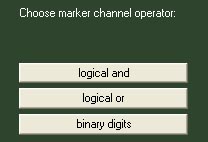
Next you can enter a minimum event duration and a maximum event duration. Event durations are measured from beginning of a new marker value to the next value change. Choosing '0' and 'inf' for minimum and maximum duration will cause ANSLAB to write one timing segment for every marker value change found in the (combined) marker signal.
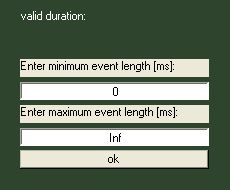

Digital timing
The procedure for a digital marker analysis is identical to a binary marker analysis. However, other operations to combine multiple marker channels are available (add, subtract, logical and, and logical or).Fixed timing
This analysis type allows to create a fixed number of non-overlapping segments covering the complete raw data (the length of the segments is determined automatically based on the recording length; option 'absolute'). It is also possible to specify a fixed length for the segments to be created. The number of non-overlapping segments is then determined automatically (option 'relative to filelength'):
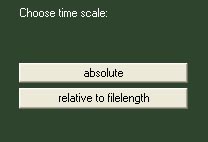
[Top]